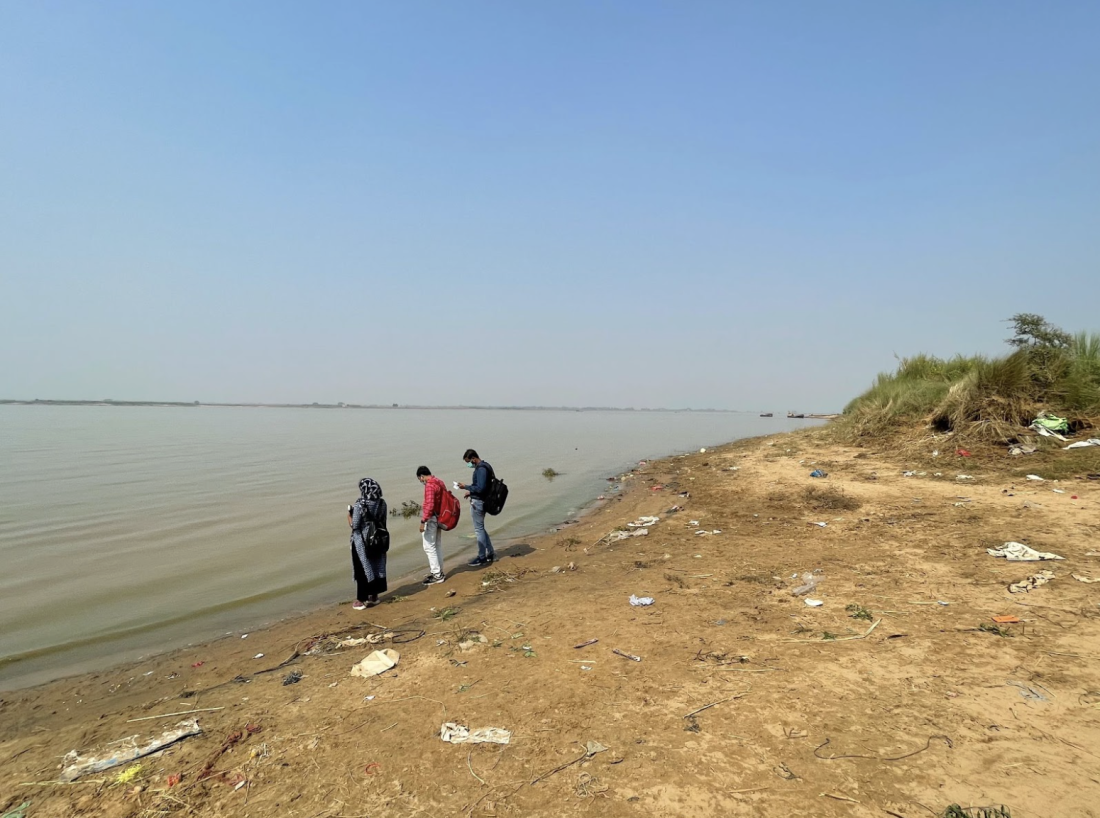Disseminating Flood Warnings to Increase Disaster Preparedness in India
- Rural population
- Climate change
- Earnings and income
- Technology adoption
- Health outcomes
- Digital and mobile
- Information
- Risk mitigation
Over nine million people are estimated to be affected by each flood occurring along the Lower Ganges in India, and climate change is increasing the incidence and intensity of flooding. Weather forecasts that warn when floods are likely to occur could protect vulnerable people by giving them time to prepare or evacuate before the flood begins. However, low-income households in remote areas most vulnerable to floods are often difficult to reach in disaster situations. Researchers are conducting a randomized evaluation to test the impact of providing flood early warnings to rural households through smartphone alerts and community volunteers on their flood preparedness and responsiveness, as well as post-flood health and economic outcomes.
Policy issue
Over 45,000 people died as a result of floods between 2011 and 2020, with the majority of deaths occurring in low-income countries. Households in remote areas are particularly vulnerable to floods due to the damage floods can cause to limited infrastructure, changing disease patterns, and morbidities associated with contaminated water after flooding. Climate change is increasing the incidence and intensity of extreme weather, with floods and extreme rainfall events being four times more likely to occur in 2020 than in 1980. Weather forecasts that warn when floods are likely to occur could protect vulnerable people from floods by giving them time to prepare or evacuate before the flood begins. However, the rural households that are the most vulnerable to floods due to lower access to services and limited infrastructure are often difficult to physically reach in disaster situations. Previous studies have indicated that early flood warnings can decrease losses from floods, however, early warning systems may not reach vulnerable communities due to limited avenues for spreading information. As such, countries have leveraged digital warning systems, through SMS, radio, or application alerts, to reach a wider audience in less time, but low literacy rates also limit the reach of SMS weather alerts. Can providing digital and hybrid early flood warnings help rural households prepare for floods?
Context of the evaluation
The Ganges-Brahmaputra river basin is home to more than 600 million people in South Asia. Between 2000 and 2010, floods displaced an estimated 200 million people and were responsible for over 16,000 deaths and US$20 billion in economic damages. Over nine million people are estimated to be affected by each flood occurring along the Lower Ganges in India. The evaluation covers rural communities in the Indian state of Bihar, which is prone to flooding during the monsoon season (June to October). In 2018, the overall literacy rate in Bihar was around 70 percent, and a survey of 81 flood-affected villages in Bihar conducted in 2019 found that only around one in five respondents used a smartphone, meaning SMS-based alerts may not reach all households in a community. Because of this, households typically receive flood alerts from other community members.

Details of the intervention
In partnership with Google and a local disaster relief NGO (Yuganter), researchers are conducting a randomized evaluation to test the impact of providing early flood warnings to rural households through smartphone alerts and community volunteers on their flood preparedness and responsiveness and post-flood income, disease morbidity, and mortality rates. The evaluation utilizes Google’s flood forecasting system to predict the location and water level of future floods. When a flood is predicted, Google’s early warning system (EWS) sends an alert to all Android smartphones in the affected area, as well as more informative alerts near community service centers, such as schools and hospitals. The evaluation covers 319 panchayats, local rural governments consisting of 2–5 villages, across twelve flood-prone districts in Bihar. Flood warnings are randomly disseminated to participating panchayats in one of two ways:
- Community EWS dissemination: Panchayats in this group receive access to community volunteers who are trained by Yuganter to effectively disseminate smartphone-based warnings and engage in community outreach activities during floods.
- ESW alerts only (comparison): The panchayats in the comparison group do not have trained volunteers to disseminate warnings but still have access to the smartphone-based alerts.
Results from a survey conducted in 2022 with 634 households across 119 panchayats show that compared to control communities, households in treatment communities received 2.37 more alerts (a 290 percent increase) on average during the 2022 flood season (June-October). Households in treatment communities were also 27 percent more likely to receive any alerts, 46.5 percent more likely to receive alerts before water reached their area, and 57 percent more likely to report receiving highly accurate flood alerts.
The research team is currently enrolling a panel of around 6,000 households across these 319 panchayats by conducting a detailed in-person household survey to understand the impacts of access to flood alerts during the 2022 flood season. To select households across the sample communities, researchers first randomly selected two villages from each panchayat, then randomly selected 10 households from each of the selected villages. As part of a longer-run evaluation, researchers plan to follow this sample of enrolled households over multiple variable flood seasons in Bihar to assess the longer-run effectiveness of the community-centered EWS intervention.
Results and policy lessons
Research ongoing; results forthcoming.
